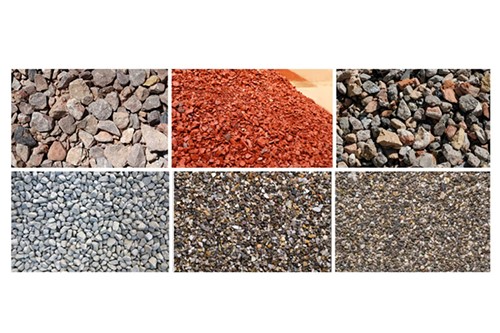ASTM E112: Grain Size Analysis
Introduction
ASTM E112 establishes the measurement of grain size in metals and alloys for consistency and accuracy for materials science application.
The mechanical properties of metals and alloys are defined by grain size. ASTM E112 standardises a technique for the measurement of grain size that is significant in quality control, research, and materials engineering.
Methods for Grain Size Analysis (ASTM E112)
ASTM E112 outlines several standardised methods of grain size determination, each suited for specific materials, precision, and equipment available:
1. Comparison Method
This method involves a visual comparison of a polished and etched specimen with ASTM grain size charts. It is rapid and acceptable for everyday quality control for which an approximate grain size will suffice. For example, in cast aluminium components, operators can easily verify whether the grain size is within the desirable range (e.g., ASTM G8–G12).
2. Planimetric (or Counting) Method
The planimetric method counts grains in an area on a microscope. The planimetric method provides a more quantitative and precise measurement, suitable for research, development, and high-performance alloys. For instance, in nickel-based superalloys used to make turbine blades, planimetric analysis ensures that the grains are equal, which is crucial for high-temperature creep resistance.
3. Intercept (or Lineal) Method
The intercept method involves drawing several test lines across the micrograph and counting the grain boundaries crossed. It is highly suited for computer-based automated image analysis systems so that there can be high-throughput measurement with reduced operator bias. It is widely used in steel, titanium, and aluminium alloy production plants where large data sets need to be established to verify batch consistency.
Each method has special advantages: the comparison method is fast and handy for routine checks, the planimetric method provides precise research-grade data, and the intercept method is best suited for automation and statistical calculation. The ideal method depends upon material type, degree of accuracy, and intended application.
Grain Size Measurement Methods
|
Method |
Description |
Applications |
|
Comparison Method |
Visual comparison with standard charts |
Quick assessments, routine checks |
|
Planimetric Method |
Counting grains within a defined area |
Detailed analysis, research |
|
Intercept Method |
Measuring the number of grain boundaries crossed by lines |
Automated systems, high-throughput |
For more information, please check Stanford Advanced Materials (SAM).
Applications of Grain Size Analysis
Grain size directly affects the mechanical properties of metals and alloys and therefore ASTM E112 testing is a necessity in many industries.
In the aerospace sector, Ti-6Al-4V turbine blades with fine grains (~10 μm) contain greater than 10⁶ fatigue cycles at 550°C, whereas coarse grains (~40 μm) reduce fatigue life by 30–40%.
Grain size analysis guarantees that heat treatments yield uniform microstructures for high-temperature application.
In the automobile industry, grain sizes from 40 μm down to 10 μm decrease yield strength by over 100 MPa without sacrificing ductility, enhancing crashworthiness. Grain examination verifies rolling and annealing processes meet specifications.
In construction, fine-grain structural steels maintain toughness at low temperatures, lowering the possibility of brittle fracture. ASTM E112 testing verifies casting and welding processes produce consistent, safe material.
Measurement of grain size is also critical in alloy design and in the analysis of failure. In nickel-based superalloys and stainless steel, an abnormal grain growth or non-uniform distribution can cause creeps or cracking before their expected time. Measurement of grain size allows engineers to directly correlate performance flaws with process parameters such as cooling rate or forging conditions.
In summary, ASTM E112 testing provides quantitative verification of microstructure with assured strength, fatigue resistance, and reliability for aerospace, automotive, construction, and advanced alloys.
Frequently Asked Questions
What is ASTM E112 used for?
ASTM E112 is utilised for the measurement of grain size of metals and alloys to establish their mechanical properties.
Why is grain size important in metals and alloys?
The grain size of metals and alloys affects their strength, toughness, and ductility, which influences their performance in various applications.
Which industries regularly utilise ASTM E112?
Industries such as aerospace, automotive, and construction regularly use ASTM E112 for quality control and material innovation.
What are the main methods given in ASTM E112?
The standard gives the comparison method, planimetric method, and intercept method for grain size measurement.
Does ASTM E112 cover all metals and alloys?
Yes, ASTM E112 is general and may be applied to a range of metallic materials, giving sound grain size measurements for all types.

 Bars
Bars
 Beads & Spheres
Beads & Spheres
 Bolts & Nuts
Bolts & Nuts
 Crucibles
Crucibles
 Discs
Discs
 Fibers & Fabrics
Fibers & Fabrics
 Films
Films
 Flake
Flake
 Foams
Foams
 Foil
Foil
 Granules
Granules
 Honeycombs
Honeycombs
 Ink
Ink
 Laminate
Laminate
 Lumps
Lumps
 Meshes
Meshes
 Metallised Film
Metallised Film
 Plate
Plate
 Powders
Powders
 Rod
Rod
 Sheets
Sheets
 Single Crystals
Single Crystals
 Sputtering Target
Sputtering Target
 Tubes
Tubes
 Washer
Washer
 Wires
Wires
 Converters & Calculators
Converters & Calculators
 Write for Us
Write for Us




 Chin Trento
Chin Trento



